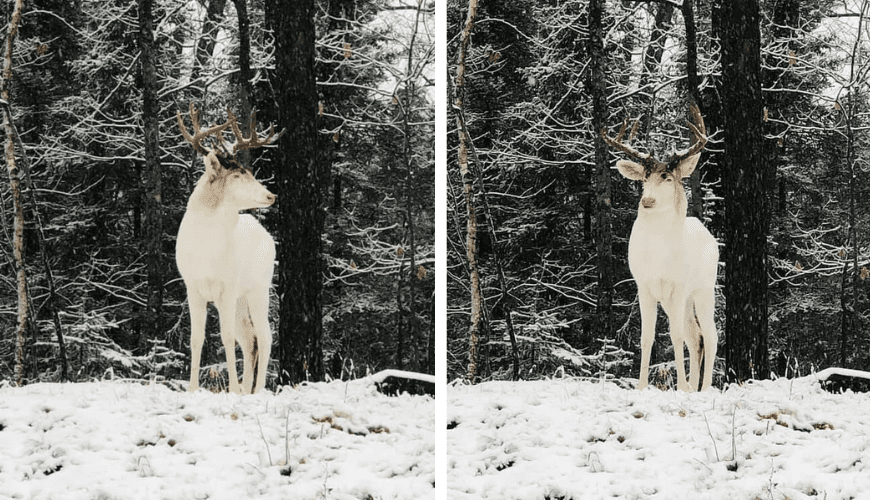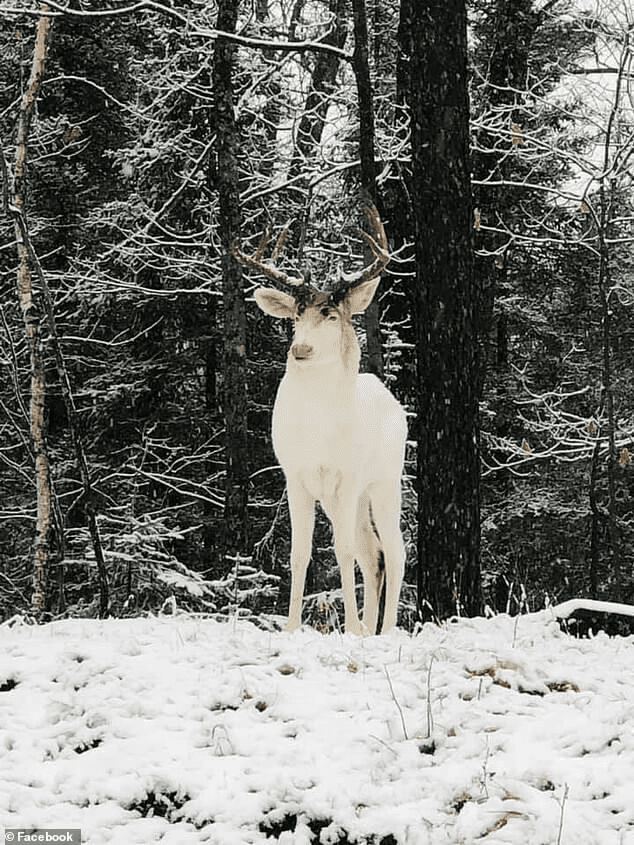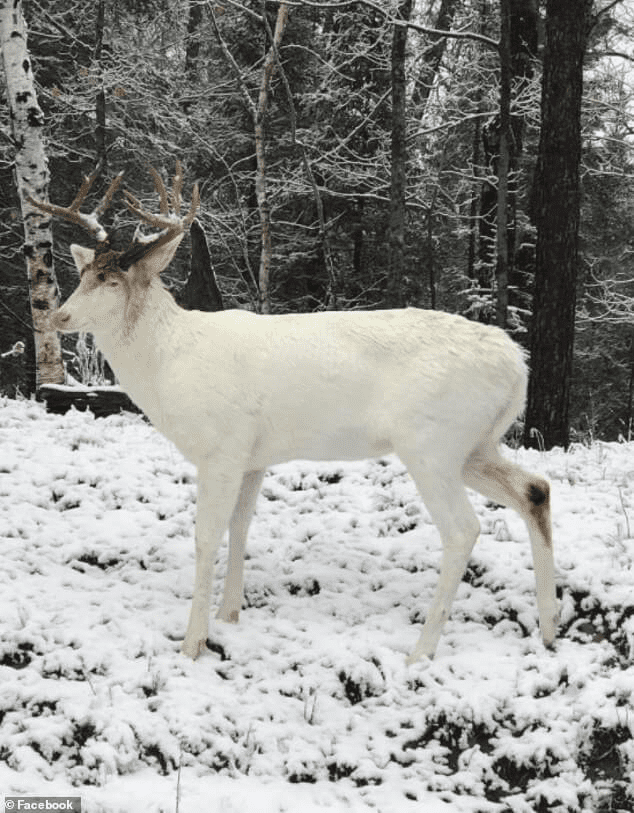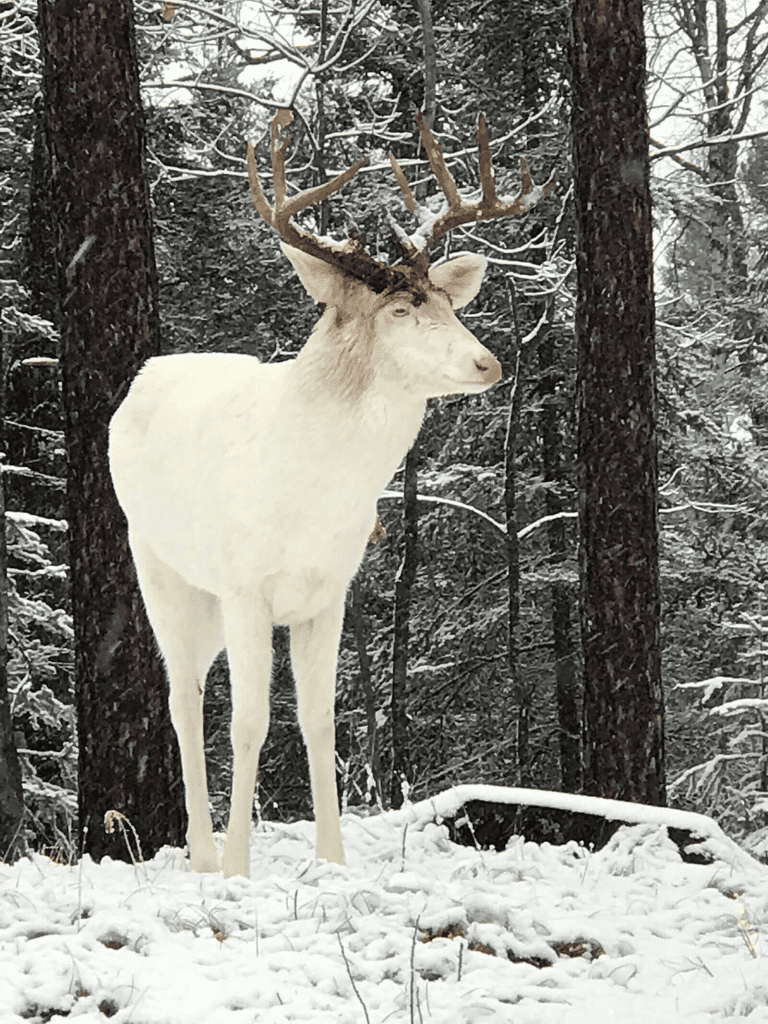Rare Albino Whitetail Deer Spotted in Snowy Backyard – A Majestic Sight to Behold

In a snowy backyard in Boulder Junction, Wisconsin, Tracy Weese stumbled upon a rare and majestic sight: an albino whitetail deer buck. The encounter, which took place in November 2020, proved to be a stroke of luck for Tracy, who managed to capture some breathtaking pictures of this unique creature.

Albino deer, distinguishable by their completely white fur, pink eyes, nose, and hooves due to the lack of pigmentation, are an extraordinary rarity. In contrast, another type known as "piebald" deer is more common, featuring spots or patches on their fur. Surprisingly, statistics reveal that only one in 30,000 deer are albino, while about one in 1,000 are piebald.

Tracy clarified that the deer she witnessed was indeed albino, not piebald. The brown patches on its head, she explained, were a result of the deer rubbing its head and antlers against trees while shedding its white velvet.
During the rut, which is the deer's mating season, the tarsal gland plays a crucial role. It causes a brown stain on the deer's leg and releases the deer's unique fragrance to attract mates.
With a height of six to seven feet and weighing up to 300 pounds, these creatures can be as large as the average person (about 136 kg).

In Wisconsin, where this enchanting encounter occurred, the state protects white deer, making it illegal to shoot them. The Wisconsin Department of Natural Resources specifies that hunters are prohibited from shooting deer with all-white fur unless specific parts like the tarsal glands, head, or head portions are colored differently.

While white-tailed deer typically have a lifespan of 6 to 14 years, albino deer face challenges that may lead to shorter lives, including various physical issues and a higher susceptibility to becoming prey.
Sadly, most albino and piebald deer do not reach adulthood.

The rarity of such a sighting prompts contemplation on whether this breathtaking view is a once-in-a-lifetime experience. Share your thoughts by leaving a comment and expressing your appreciation for this extraordinary moment. Don't forget to click the like and share buttons to spread the magic of this unique encounter.